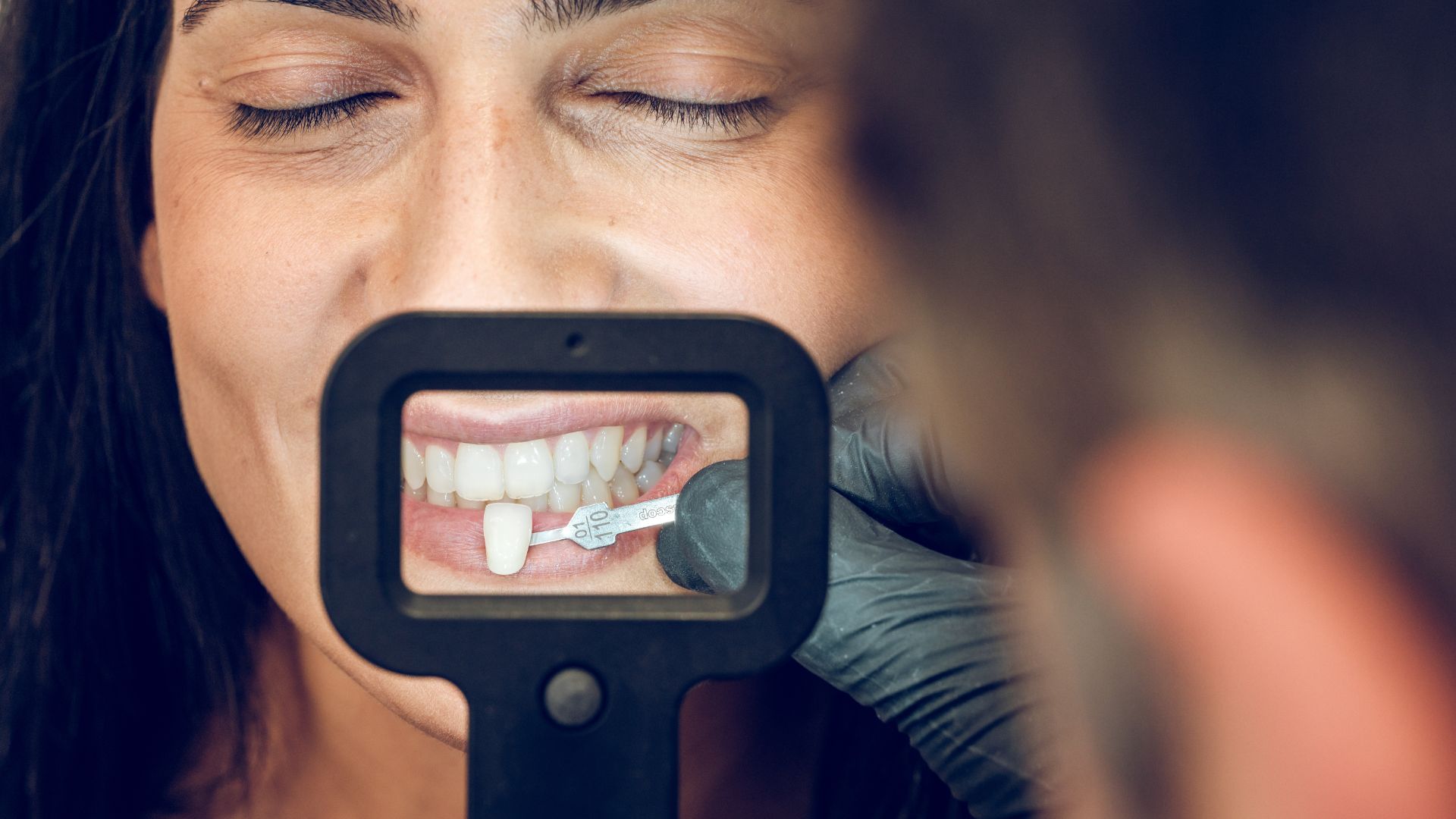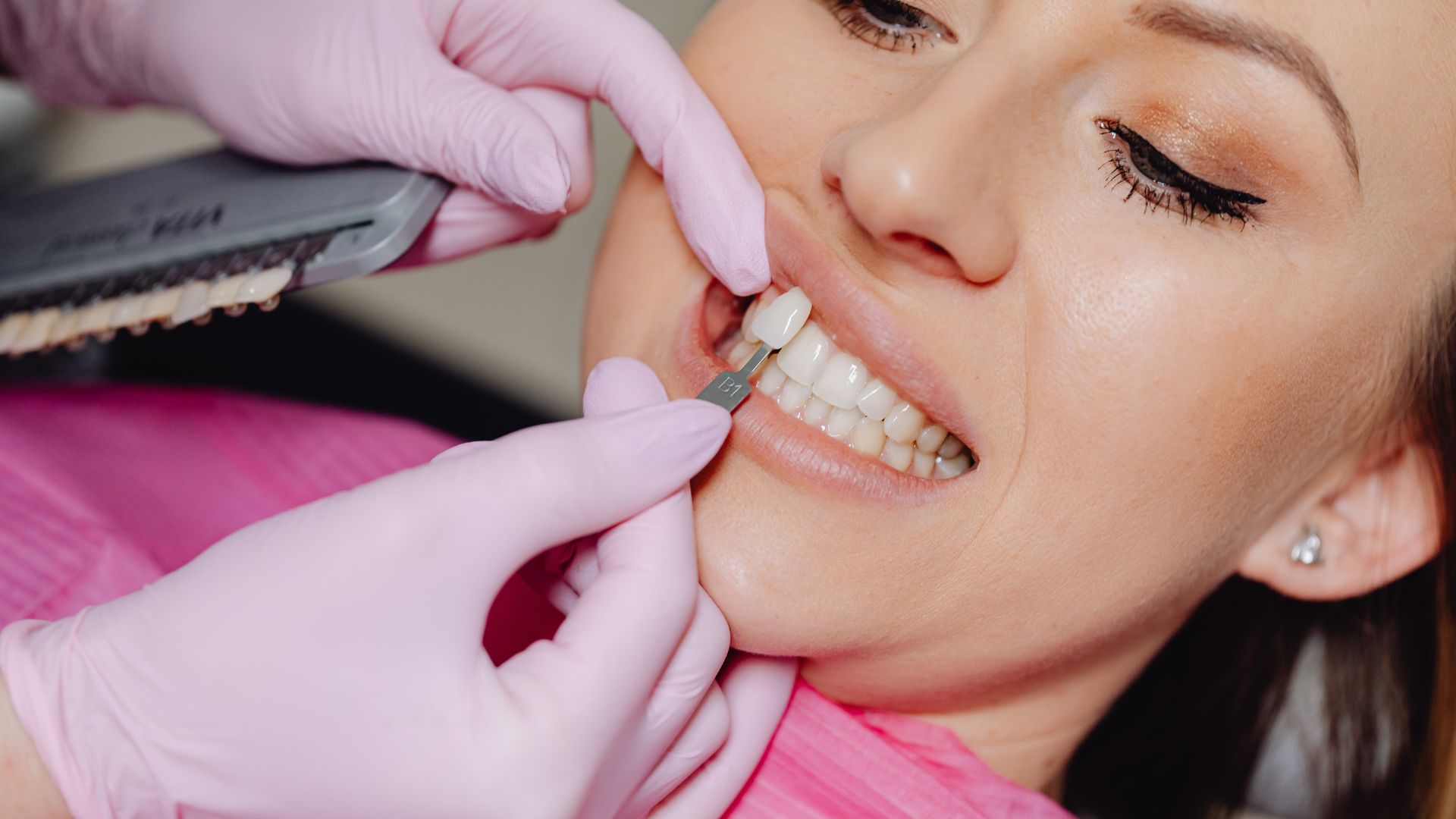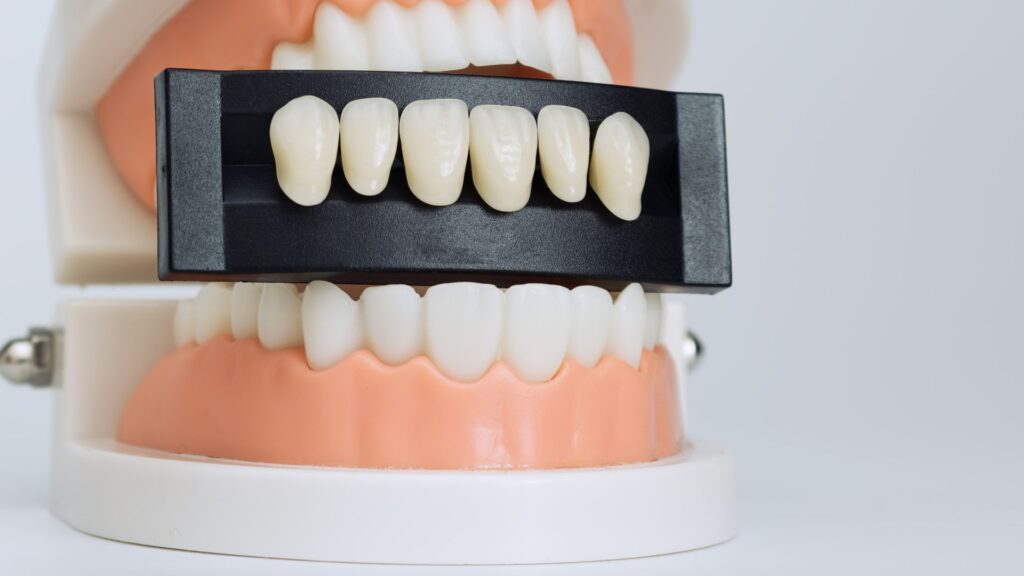When you look in the mirror, do you ever notice a chipped edge, a stubborn stain, or small gaps that make you self-conscious about smiling? Cosmetic dentistry offers multiple solutions, but choosing the right one isn’t always straightforward. Two of the most common treatments are porcelain veneers and composite bonding; both transform your smile, yet they work in very different ways.
Understanding the durability, cost, aesthetics, and suitability of each option is essential before making a decision. This guide goes beyond the basics to explain the fundamental differences, benefits, and limitations of veneers and bonding, backed by expert insights and current research. If you are considering cosmetic dentistry in Mira Road, this article will help you evaluate which treatment best fits your needs.
What Are Porcelain Veneers?
Porcelain veneers are thin, custom-made shells designed to cover the front surface of teeth. They are usually crafted from high-quality porcelain or ceramic materials that mimic the natural translucency of enamel. Veneers are ideal for correcting issues such as chipped teeth, deep stains, gaps, or irregular shapes.
The procedure typically involves two to three visits. During the first appointment, the dentist prepares the teeth by removing a small amount of enamel. An impression is then taken, and veneers are created in a dental lab. On the final visit, the veneers are bonded to the teeth using dental cement.
With proper care, porcelain veneers can last 10 to 15 years. They are stain-resistant, durable, and provide a natural-looking smile that closely resembles healthy teeth.
What Is Composite Bonding?
Composite bonding is a quicker and more affordable cosmetic dentistry procedure. It involves applying a tooth-colored resin material directly onto the tooth surface. The dentist shapes the resin to match your natural teeth and hardens it with a special light.
Bonding is best suited for minor corrections such as closing small gaps, fixing chips, or covering slight discoloration. Unlike veneers, bonding usually requires no removal of enamel, making it a minimally invasive treatment.
The entire process can be completed in a single appointment. However, composite bonding is less durable than porcelain veneers. It generally lasts five to seven years and is more prone to staining from coffee, tea, or smoking.

Veneers vs. Bonding – Key Differences
When comparing porcelain veneers and composite bonding, it is essential to look at several factors:
- Porcelain veneers require more preparation, but they provide a longer-lasting and more natural appearance. Composite bonding, on the other hand, is faster and more cost-effective, though it may need repairs or replacements sooner.
- Veneers are highly stain-resistant, while bonding can discolor over time. Aesthetically, veneers mimic natural teeth better, making them a preferred choice for patients seeking a complete smile makeover.
Cost Considerations
Cost is often a deciding factor in cosmetic dentistry in Mira Road. Porcelain veneers involve higher expenses because of the laboratory process, specialized materials, and longer durability. Composite bonding is more affordable since it is completed chairside in a single sitting.
The cost of both treatments in India depends on the number of teeth treated, the dentist’s expertise, and the materials used. Insurance usually does not cover cosmetic procedures.
Disclaimer: Costs vary by clinic and location. Always consult a qualified dentist for an accurate estimate.
Pros and Cons of Porcelain Veneers
Porcelain veneers are one of the most popular choices for a smile makeover because they combine strength, beauty, and longevity. Before deciding, it’s essential to understand both their benefits and their limitations.
Advantages
Porcelain veneers are known for their strength, stain resistance, and highly natural appearance. They are crafted to match the shape and translucency of real teeth, making them a reliable option for patients who want a polished, long-term solution to issues like discoloration, chips, or gaps. With proper care, they can last more than a decade, offering consistent aesthetics.
Limitations
The main drawback of veneers is their cost, which is higher compared to other cosmetic dentistry procedures. The process also involves removing a thin layer of enamel to ensure proper placement, making the treatment irreversible. Patients should consider this carefully before committing.
Pros and Cons of Composite Bonding
Composite bonding is a quick and minimally invasive alternative, often recommended for patients looking for more minor corrections at a lower cost. While effective, it comes with its own set of advantages and drawbacks.
Advantages
Composite bonding provides a quicker, more affordable way to correct minor cosmetic concerns. It requires little to no enamel removal, making it minimally invasive. The procedure is typically completed in a single visit, allowing patients to walk out with noticeable improvements immediately.
Limitations
Bonding is less durable than veneers and is more likely to stain over time, especially with coffee, tea, or smoking. The material can chip or wear down, often requiring touch-ups or replacements within five to seven years.

Which Option Is Right for You?
Choosing between veneers and bonding depends on your dental goals, budget, and oral health. If you want a long-lasting, natural-looking solution for a smile makeover, porcelain veneers may be the right choice. If you prefer a budget-friendly, minimally invasive treatment for minor corrections, composite bonding could be a better fit.
It is essential to consult a licensed cosmetic dentist who can assess your oral health, bite alignment, and expectations before recommending the best option.
At Family Dental Clinic in Mira Road, dentists carefully evaluate each patient’s needs to provide safe and effective treatment plans.
Porcelain Veneers vs. Composite Bonding
|
Factor |
Porcelain Veneers |
Composite Bonding |
| Durability | 10–15 years | 5–7 years |
| Aesthetics | Highly natural, translucent look | Good, but less natural over time |
| Stain Resistance | Excellent, porcelain resists stains | Prone to staining (coffee, tea, smoking) |
| Procedure | Requires enamel trimming, 2–3 visits | Single visit, minimally invasive |
| Cost | Higher investment | More affordable |
Frequently Asked Questions
Do veneers or bonding damage natural teeth?
Veneers require slight enamel removal, while bonding usually does not. Both procedures are safe when performed by qualified professionals who follow ethical dental standards.
Which treatment looks more natural?
Porcelain veneers mimic tooth translucency and reflect light like natural enamel. Composite bonding provides a good cosmetic fix but may not match veneers in long-term aesthetics.
Can veneers or bonding fix crooked teeth?
Minor misalignments may be improved, but orthodontic treatment may still be required for moderate or severe cases. These treatments are primarily cosmetic, not orthodontic.
Are these treatments permanent?
Neither option is permanent. Veneers are long-lasting but may need replacement after 10–15 years, while bonding lasts about 5–7 years and may require touch-ups sooner.
Which option is better for stains?
Porcelain veneers resist stains better than bonding. Patients who consume staining foods or beverages may prefer veneers for long-term results.
Is the procedure painful?
Both treatments are generally comfortable. Veneers may involve slight numbing during preparation, while bonding is usually pain-free and completed in one sitting.
Conclusion
Both porcelain veneers and composite bonding are valuable cosmetic dentistry options for improving your smile. Veneers offer a long-lasting, stain-resistant, and highly aesthetic solution, while bonding provides a quick and cost-effective fix for minor issues.
The right choice depends on your dental goals and budget.If you are considering a smile makeover through cosmetic dentistry in Mira Road, consulting a qualified dentist is the best first step. A personalized evaluation will help you choose the treatment that balances aesthetics, durability, and comfort for your unique needs.
Disclaimer: This blog is for educational purposes only. It is not a substitute for professional diagnosis or treatment. Outcomes may vary from person to person. Always consult a qualified dentist for personalized care.






